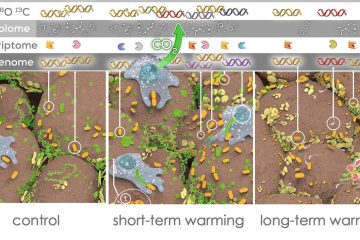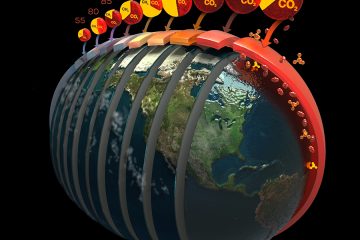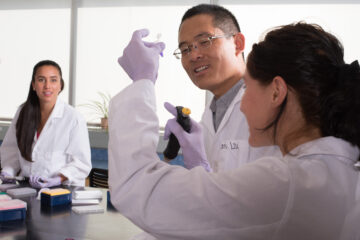New $764K award from Dept. of Energy will help better predict fate of permafrost carbon

As the Arctic endures another summer of record-breaking surface air temperatures, a team from NAU, led by Ecoss’ assistant research professor Christina Schädel, has been awarded a three-year, $764,000 grant from the Department of Energy to help improve models that predict what will happen to permafrost carbon as the Arctic continues to warm. The team, which includes Ecoss Regent’s Professor Ted Schuur, School of Earth and Sustainability’s Deborah Huntzinger and Lawrence Berkeley Lab’s Bill Riley, will use data from warming experiments conducted across the Arctic to improve earth system models that depict the fate of permafrost carbon.
Permafrost, ground that stays frozen two or more years, contains nearly twice as much carbon as is in the atmosphere today. When permafrost thaws, soil microbes release CO2 and methane into the atmosphere, accelerating climate warming. Predicting what will happen to those vast stores of carbon being unlocked by warming temperatures in the North is a relatively new challenge for the modeling community, said Schädel, who coordinates the Permafrost Carbon Network with Schuur. “For many, many years the models showed that the carbon was there, but they assumed nothing happens to it,” she said.
But in the last two decades, those assumptions have changed, as both observational studies and warming experiments across the Arctic reveal how dynamic and vulnerable to change this pool of carbon is. Warming experiments, which use a variety of methods including open top chambers, snow fences, greenhouses, soil heating cables, have shown that rising air temperatures not only thaw permafrost, but change the moisture characteristics of the terrain, creating thermokarst features and wetter conditions in which some processes like microbial respiration slow. The experiments challenge another assumption baked into some earth system models: that warming stimulates plant photosynthesis (referred to as gross primary production) in permafrost regions. More plants taking up more CO2 could offset the release of carbon from microbes in thawing soil, but some experiments have found that the plant-stimulating effects of permafrost warming weren’t as significant as models predicted.
By analyzing and synthesizing warming experiments across the Arctic, Schädel’s team will create benchmarks that help the models refine their processes and make better predictions. Then they will test these data inputs with the help of modeling teams across the globe. Because climate and earth system modeling is such a computing- and time-intensive process, the project requires the cooperation from teams who run the enormous programs. Schädel said the modeling community was quick to get on board.
“I heard back from most of the modeling groups I wrote to within 24 hours,” Schädel said. “They are really excited about this project.” The team also plans to host virtual workshops that bring together modelers and experimentalists to share findings and new approaches.
Temperature records set in Siberia this June—air temperature topped 100 degrees Fahrenheit–demonstrate how urgent this research is, Schädel said. “It shows it’s not in the far future—things are changing now. Not too long ago, there was the assumption that not much is happening in the Arctic. And now it’s very obvious.”


